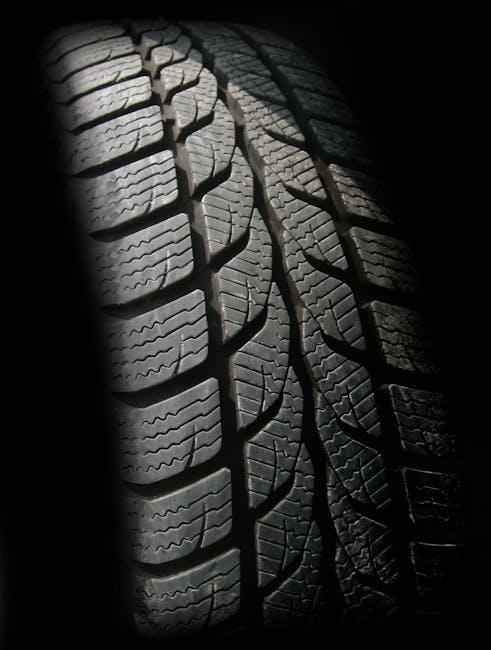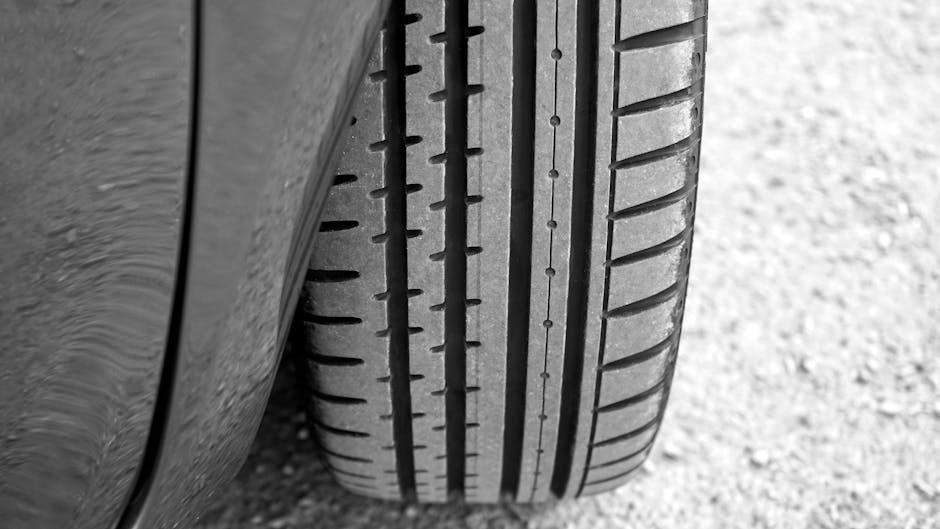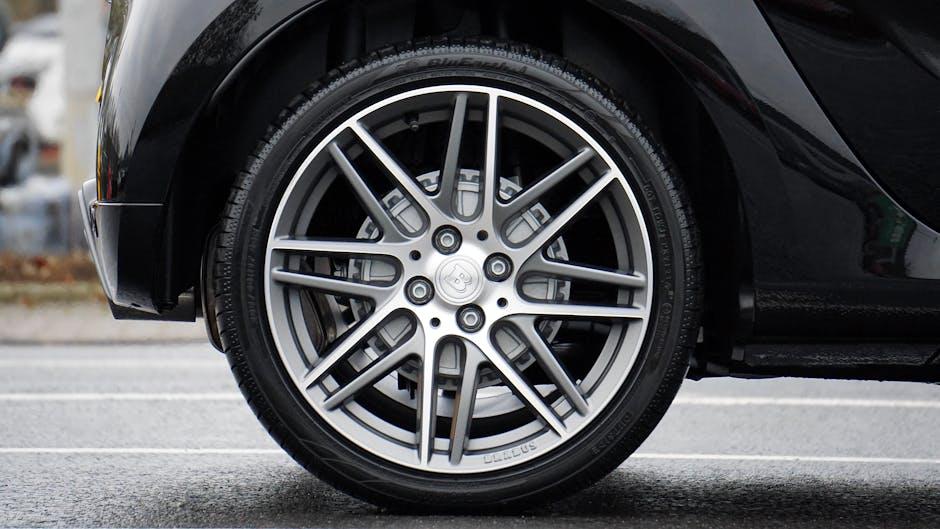Choosing the right tires for your car can feel like navigating a maze—endless options, varying prices, and a dizzying array of features all competing for your attention. Yet, tires are much more than mere rubber circles; they are the vital connection between your vehicle and the road, influencing safety, performance, and comfort. Whether you’re cruising city streets, tackling rugged terrain, or seeking fuel efficiency, understanding how to select the perfect set of tires is essential. This guide will demystify the process, helping you make an informed decision that keeps you rolling smoothly and confidently on every journey.
Table of Contents
- Understanding Your Driving Needs and Conditions
- Decoding Tire Types and Their Performance Benefits
- Interpreting Tire Size and Specifications for a Perfect Fit
- Evaluating Tire Tread Patterns for Safety and Traction
- Balancing Budget with Quality and Longevity
- Tips for Maintaining Your Tires to Maximize Lifespan
- Q&A
- Future Outlook

Understanding Your Driving Needs and Conditions
Every driver’s journey is unique, shaped by the routes they take and the climates they face. Before selecting tires, assess the common terrains you encounter—whether it’s smooth highways, gravel roads, or urban streets with occasional potholes. Weather conditions dramatically influence tire performance. Those living in regions with severe winters should prioritize tires with enhanced traction on ice and snow, while drivers in warmer climates may focus on durability and heat resistance.
Consider these key factors to better match your tires with your driving lifestyle:
- Average daily mileage: Higher mileage demands tires that balance longevity with comfort.
- Road type predominance: Off-road use requires more rugged tires; city driving benefits from smooth tread patterns.
- Weather variability: All-season versus specialized summer or winter tires can be tailored to your local climate.
- Driving habits: Aggressive acceleration or frequent braking can wear certain tires faster.
| Driving Condition | Recommended Tire Type | Key Feature |
|---|---|---|
| Urban and Highway | All-Season Tires | Balanced performance and durability |
| Snow and Ice | Winter Tires | Superior traction in cold conditions |
| Off-Road | All-Terrain Tires | Durable tread for rough surfaces |

Decoding Tire Types and Their Performance Benefits
When selecting tires, it’s essential to understand the unique characteristics that differentiate each type. All-season tires are the versatile performers designed to offer balanced traction, durability, and comfort in a variety of conditions—ideal for everyday driving without extremes. In contrast, performance tires cater to those who crave precision handling and enhanced grip, especially at higher speeds or spirited cornering. Meanwhile, winter tires excel in icy, snowy conditions, featuring specialized tread patterns and rubber compounds that remain flexible in subzero temperatures, ensuring maximum safety and control.
To help visualize the key attributes, consider this simple overview:
| Tire Type | Best For | Performance Benefits |
|---|---|---|
| All-season | Mild climates and everyday driving | Balanced grip, longevity, comfort |
| Performance | Sporty driving and high-speed stability | Enhanced traction, sharp handling |
| Winter | Snow, ice, and cold weather | Superior cold-weather grip, improved braking |
| Off-road | Rough terrain and unpaved surfaces | Durability, deep tread for traction |
By aligning your tire choice with your driving environment and style, you gain not just safety but also optimize fuel efficiency and ride comfort. Remember that even within each category, variations exist, so always consider additional factors like tread wear rating, noise levels, and load performance to find a set perfectly tuned to your needs.

Interpreting Tire Size and Specifications for a Perfect Fit
Understanding tire size and specifications is your first step to ensuring a seamless fit and optimal performance. Each tire comes with a series of numbers and letters imprinted on its sidewall — a coded message revealing everything from its width to its construction type. For example, a tire marked 205/55R16 91V includes critical details: 205 indicates the tire width in millimeters; 55 is the aspect ratio (height to width percentage); R means radial construction; 16 is the diameter of the wheel in inches; 91 stands for the load index, and V is the speed rating.
Before purchasing, consider these key factors to guarantee a perfect match:
- Load Index: Ensures the tire can support your vehicle’s weight safely.
- Speed Rating: Matches the maximum speed capabilities recommended by your vehicle manufacturer.
- Diameter Compatibility: A must-check to fit your wheel rims perfectly.
- Tire Type: Choose between summer, winter, or all-season tires based on your driving conditions.
| Specification | Meaning | Example |
|---|---|---|
| Tire Width | Measured in millimeters, across the tread | 205 |
| Aspect Ratio | Tire height as a % of width | 55 |
| Construction | Radial (R) or Bias | R |
| Wheel Diameter | Diameter of the wheel rim in inches | 16 |
| Load Index | Max load capacity | 91 |
| Speed Rating | Max speed capability | V |

Evaluating Tire Tread Patterns for Safety and Traction
When selecting tires, the design of the tread pattern plays a pivotal role in determining how your vehicle interacts with the road. Different patterns are engineered to excel under varying driving conditions, influencing grip, water evacuation, and overall safety. For instance, tires with deep grooves and wide channels are exceptional at hydrating water, reducing the risk of hydroplaning during wet weather. Meanwhile, symmetrical tread patterns offer a balanced performance and are generally more durable, ideal for everyday driving on dry or slightly wet surfaces. Understanding these subtle differences can empower you to pick a tire that matches not only your driving style but also the environments you most frequently encounter.
Here’s a quick breakdown of common tread types and their main benefits:
- Asymmetrical: Offers a blend of dry grip and wet traction for versatile handling.
- Directional: Designed for high-speed water evacuation and improved wet performance.
- Symmetrical: Provides long-lasting tread life and quieter rides.
- All-Terrain: Aggressive patterns for off-road traction combined with on-road stability.
| Tread Pattern | Best For | Key Advantage |
|---|---|---|
| Asymmetrical | City and highway driving | Balanced wet and dry performance |
| Directional | Rainy conditions & wet roads | Excellent water dispersal |
| Symmetrical | Daily commuting | Quiet, stable ride |
| All-Terrain | Off-road & mixed surfaces | Superior traction on rugged terrain |

Balancing Budget with Quality and Longevity
Striking the perfect balance between cost and durability is a challenge many drivers face when selecting new tires. While it’s tempting to opt for the cheapest option, investing just a bit more in quality can deliver significant value over time. Premium tires often come with enhanced tread compounds and stronger sidewalls that resist wear and damage, extending their useful life. Consider your driving habits and environment; tires that suit your specific needs can help you avoid frequent replacements, saving money in the long run.
To make an informed choice, weigh the following factors carefully:
- Initial cost vs. lifespan: A budget-friendly tire with a 30,000-mile warranty may sound appealing, but a slightly pricier model rated for 50,000 miles could reduce replacement frequency.
- Performance benefits: Higher-end tires often provide better handling, fuel efficiency, and safety, contributing indirectly to overall savings.
- Warranty and reviews: Check manufacturer warranties and user feedback to identify products that deliver consistent durability.
| Price Range | Typical Lifespan (miles) | Ideal Use |
|---|---|---|
| Low ($50-$80) | 20,000 – 30,000 | City driving, occasional use |
| Mid ($90-$150) | 35,000 – 50,000 | Daily commuters, mixed conditions |
| High ($160+) | 50,000+ | Performance, long-distance, all weather |

Tips for Maintaining Your Tires to Maximize Lifespan
Proper tire maintenance is essential to ensure your tires perform optimally and last as long as possible. One of the first steps you can take is to regularly check your tire pressure. Underinflated or overinflated tires can wear unevenly and reduce fuel efficiency. Make it a habit to inspect your tires at least once a month with a reliable pressure gauge, adjusting to the manufacturer’s recommended PSI. Additionally, rotate your tires every 6,000 to 8,000 miles to promote even tread wear and extend tire life.
Beyond pressure and rotation, keeping an eye on alignment and tread depth plays a significant role in tire longevity. Misaligned wheels cause tires to wear prematurely on one side, drastically shortening their lifespan. Use a tread depth gauge to ensure your tires maintain a healthy grip on the road—replace them if the tread is below 2/32 of an inch for safety. Consider these quick maintenance tips for long-lasting tires:
- Inspect tires for cracks or bulges to spot potential damage early.
- Balance tires during rotation to reduce uneven wear and vibrations.
- Avoid abrupt stops and fast cornering which accelerate tread wear.
| Maintenance Task | Recommended Frequency |
|---|---|
| Check tire pressure | Monthly |
| Rotate tires | Every 6,000-8,000 miles |
| Wheel alignment | Annually or after impact |
| Tread depth check | Every 5,000 miles |
Q&A
Q&A: How to Choose the Right Tires for Your Car
Q1: Why is choosing the right tires important for my car?
A1: Tires are the only contact point between your car and the road. Choosing the right ones affects your vehicle’s safety, handling, fuel efficiency, and ride comfort. The right tires ensure optimal grip, braking, and durability, tailored to your driving needs and conditions.
Q2: What key factors should I consider when selecting tires?
A2: Think about your typical driving conditions (city, highway, off-road), climate (summer, winter, all-season), tire size (matching your car manufacturer’s specs), performance requirements, and budget. Each of these influences which tire type and brand suit you best.
Q3: What are the main types of tires available?
A3: The big three are summer tires, winter tires, and all-season tires. Summer tires excel on dry and wet roads in warm weather, winter tires provide traction on snow and ice, and all-season tires offer a balanced approach for varying conditions, but may not specialize in extremes.
Q4: How can I find out my car’s correct tire size?
A4: Check the sidewall of your current tires for a code like “205/55R16,” or consult your owner’s manual and the placard inside the driver’s door jamb. Using the correct size ensures proper fit, handling, and performance.
Q5: Does tire tread pattern matter?
A5: Absolutely! Tread patterns influence how tires channel water, grip surfaces, and reduce noise. Symmetrical treads are good for longevity and comfort, directional treads optimize water evacuation, and asymmetric treads blend handling with performance.
Q6: How important is tire brand and price?
A6: Brand reliability often correlates with quality control and technology, but it’s not always about the most expensive. Look for tires with good reviews for your intended use, and certifications meeting safety standards. Sometimes value brands provide commendable performance at a lower price.
Q7: How often should I replace my tires?
A7: Tire lifespan varies, but generally, tires last 25,000 to 50,000 miles depending on quality and usage. Check tread depth regularly (replace if below 2/32 inch), and look for signs of wear, cracking, or damage. Also, tires older than 6-10 years should be replaced regardless of tread due to rubber degradation.
Q8: Can I mix different types of tires on my car?
A8: It’s best to avoid mismatched tires, as inconsistent grip and handling can compromise safety. Ideally, replace all four tires at once. If replacing only two, make sure they are the same model and on the same axle for balanced performance.
Q9: How do I know if a tire fits my driving style?
A9: Consider your driving habits: do you prioritize sporty handling, comfort, or fuel savings? Touring tires favor smooth rides and longevity, performance tires focus on cornering and grip, and eco-friendly tires optimize rolling resistance for better mileage.
Q10: Where can I get professional advice on tires?
A10: Tire retailers, automotive mechanics, and your car dealer can provide guidance based on your vehicle and driving needs. Many also offer installation, balancing, and alignment services to maximize tire life and safety.
Choosing the right tires is an investment in your car’s performance and your peace of mind. With a little research and understanding, you can roll confidently through every season and mile.
Future Outlook
Choosing the right tires for your car is more than just a routine purchase—it’s a decision that shapes your driving experience, safety, and even your vehicle’s performance. By understanding your driving habits, vehicle requirements, and the vast array of tire options available, you can confidently navigate the road ahead with tires that truly fit your needs. Remember, the right set of tires is not just about the journey, but about making every mile count. So, take your time, do your research, and let your tires be the trusted companions on all your adventures.


5 Comments
jzo54d
jzo54d
5er31w
1ytfdu
rxr4ki